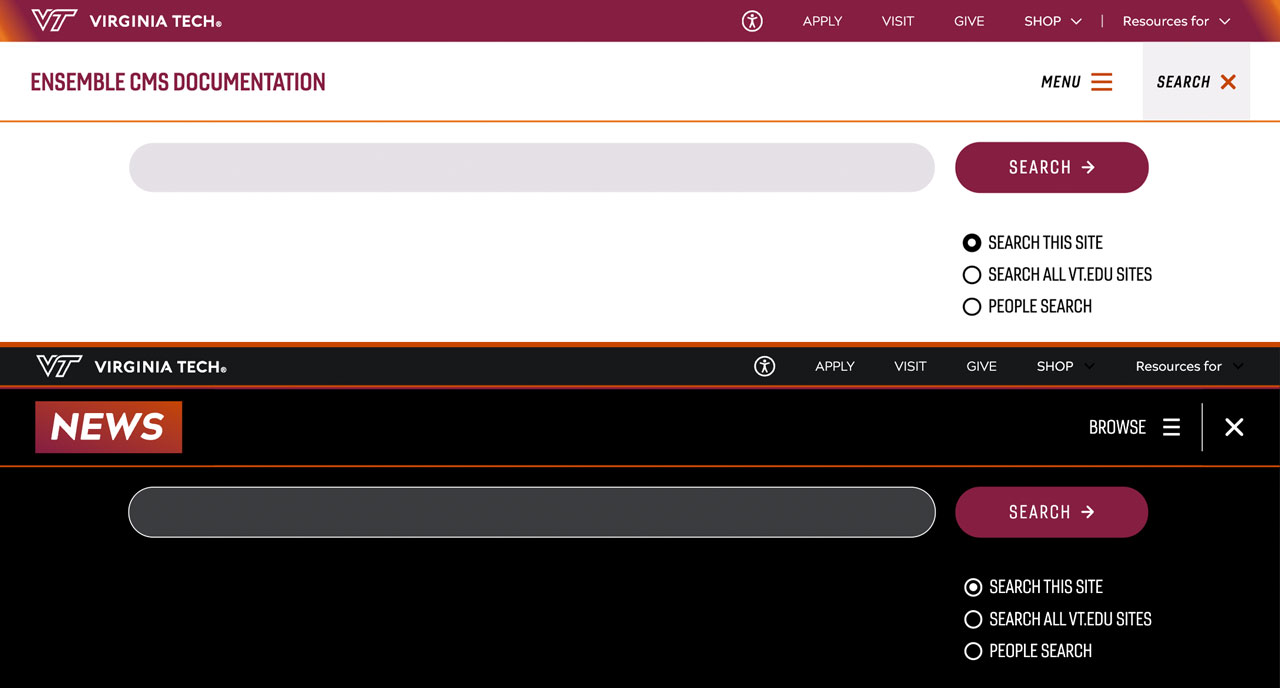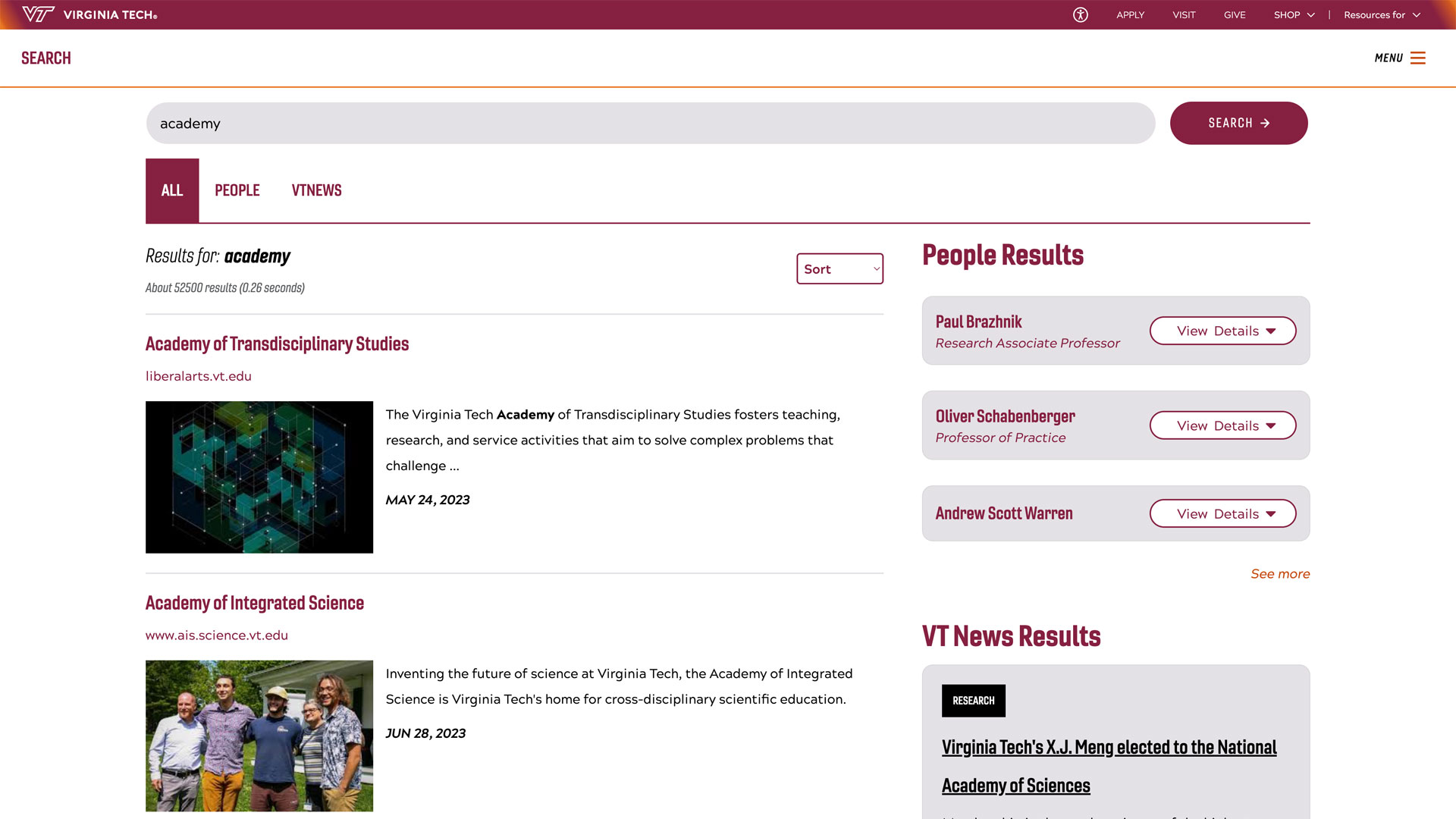Search Help
The search feature within the content management system themes has options for searching the site you are currently on (default), searching all Virginia Tech websites, or searching for people directory information.
Search results will appear in the All tab for web search results with asides for matching people and news results. If the theme people search option or the people tab is clicked, people results will be displayed, alone.
There are other refinement tabs that will also display results for common Virginia Tech resources.
Search Tips
quantum physics
Finds all documents that contain both words, 'quantum' as well as 'physics'.
'quantum physics'
Finds all documents that contain the exact phrase 'quantum physics'.
physics -quantum
Finds all documents that contain the word 'physics' but excludes ones containing the word 'quantum'.
physics OR quantum
Finds all documents that contain at least one of the two words. The 'OR' must be uppercase.
More search options
- Search the University Photo Library
- Search the University Libraries
- Search the Undergraduate Course Catalog
- Search the TLOS Course Catalog
- Search for Ensemble support
- Search for Jobs
- Get IT Support (4Help)
- Search the VT Policy Library




